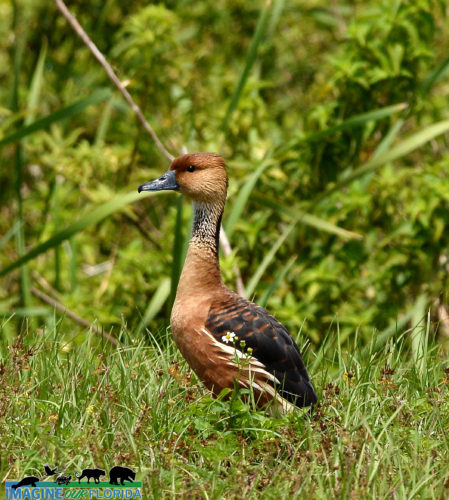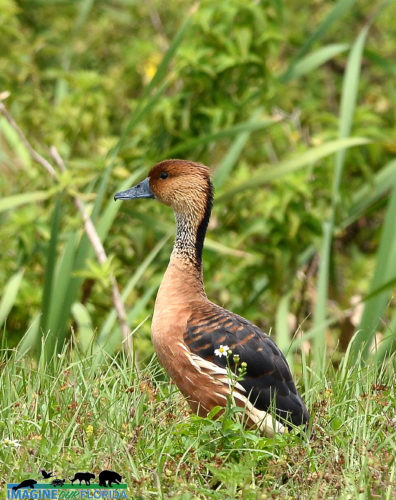Fulvous Whistling-Ducks, Dendrocygna bicolor, are found year-round in rice fields in central Florida. Look for them in flooded pastures, irrigated lands, ponds, lakes, freshwater marshes, slow-moving rivers, and freshwater wetlands. Once known as the Fulvous Tree Duck, these birds roost in the trees of forested areas next to their water source. They may flock with Black-bellied Whistling-Ducks. As winter approaches, watch for them to appear in greater numbers in freshwater marshes and wetlands.
These striking caramel and black ducks with their oversized bluish-gray legs forage in water that is less than 20 inches deep. Dinner consists of mostly seeds from aquatic plants and some invertebrates. Fulvous Whistling-Ducks can be seen wading or swimming while foraging by diving, tipping up, or dabbling to find food with their bills. Their thick bills are made to filter the food from the mud. You may also find them plucking an insect from vegetation for a tasty snack.
In mid-April, Fulvous Whistling-Ducks leave their flocks to begin the mating season. Mated pairs are bonded for years and sometimes for life, although the males may sometimes mate with more than one female. Together, the male and female choose the nest site in a dense marsh above the water or on the ground near the water. They build the nest by weaving stalks and grasses into a 14-inch bowl shape that is 4.3 inches deep. Most include a ramp to the water. The clutch size is 2 – 14 eggs and the female and male share the task of incubation for 24 – 25 days. Although the young leave the nest soon after hatching, instinctually know how to swim and dive as well as forage., both parents look after them until they fledge two months later.
Photo Credit: Dan Kon


